On the Road is a weekday feature spotlighting reader photo submissions.
From the exotic to the familiar, whether you’re traveling or in your own backyard, we would love to see the world through your eyes.
It’s Albatrossity Monday! Tomorrow, p.a. takes us on a day trip to New York City. Then we head to San José with arrieve for the rest of the week. Sounds like a great week to me!
Albatrossity
Lake Manyara National Park is situated between our first destination in Tanzania (Tarangire National Park) and our second major destination, the Ngorongoro Crater, which is situated within a large conservation area. So it was a natural stop to include this national park on our road trip to get to Ngorongoro. This was a day of intermittent rain, so it probably was a good day to spend mostly in the vehicles. But we did have some sunny interludes, and some great birds!
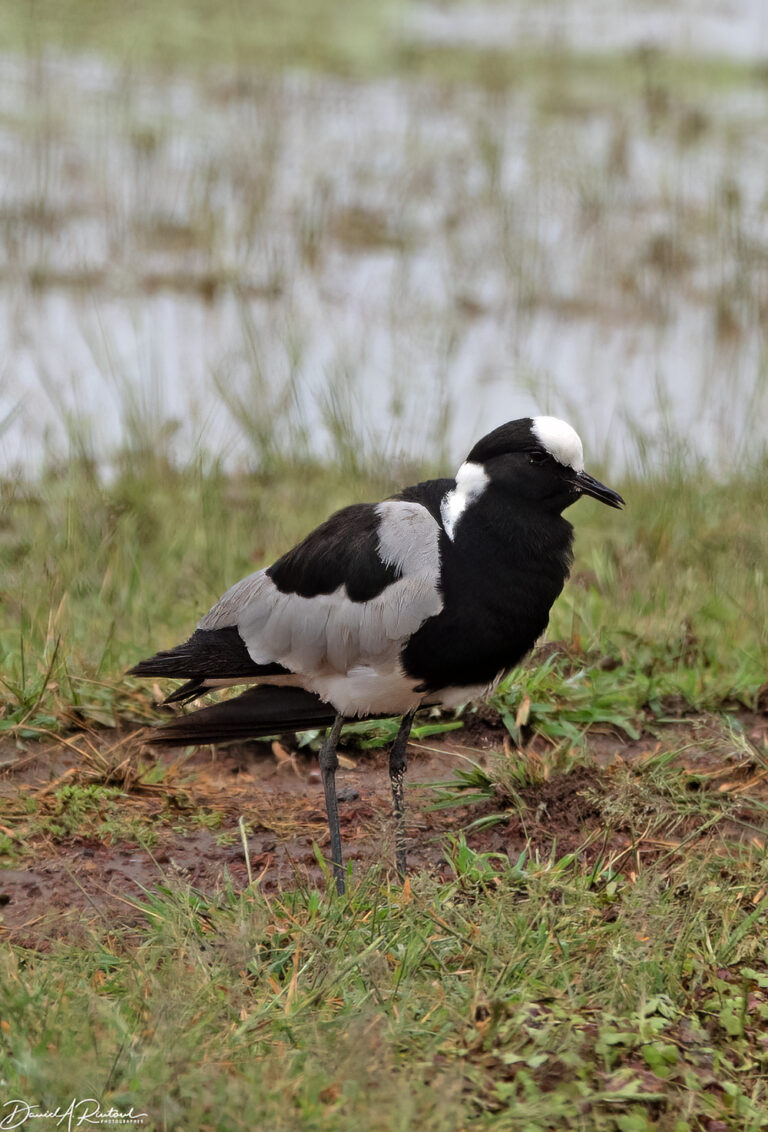
There are 20 or 30 plover species in east Africa, and they are found in wet areas as well as dry. Many of these are in the Vanellinae subfamily, aka the lapwings (the collective name for a flock of lapwings is a “deceit”) . The origin of this term is old English lappewinke, which literally means “leaper-winker”, and is thought to be derived from the irregular twinkling pattern of the wings of the Northern Lapwing (the only lapwing found in northern Europe) in flight. We saw several species of lapwings on this day, and this one was among the most common. It is the Blacksmith Lapwing (Vanellus armatus, aka Blacksmith Plover), named for its “tink-tink-tink” alarm call, which does indeed sound like a hammer hitting a metallic object. Click here for larger image.
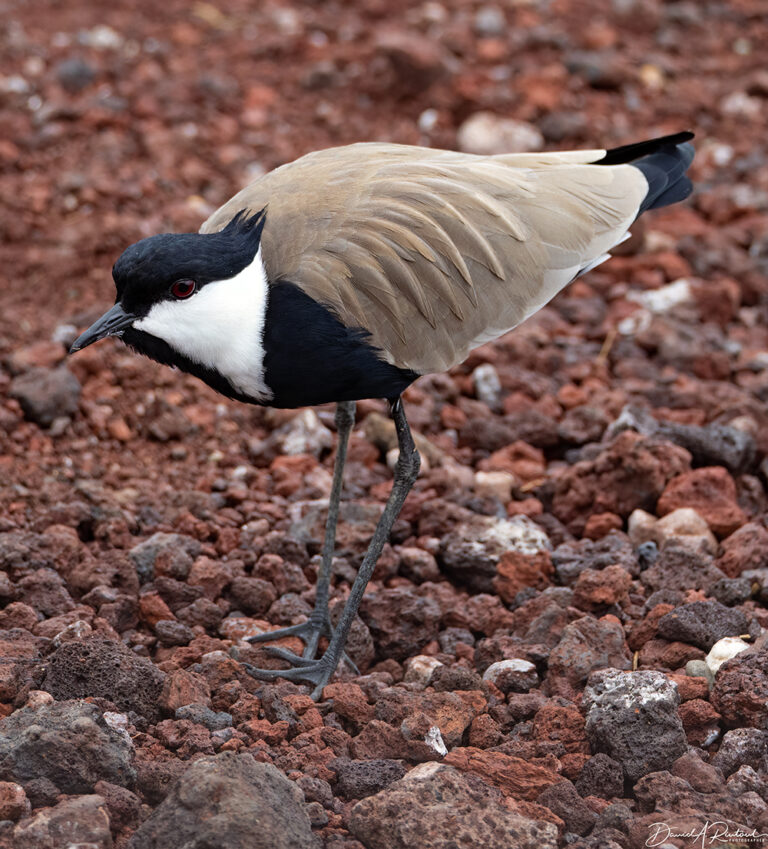
Lapwing #2 is another one we commonly saw, the Spur-winged Lapwing (Vanellus spinosus, aka Spur-winged Plover). You can’t see the eponymous spurs on the wings in this picture, they are actually rather puny compared to some of the other lapwings. Here’s a shot from another photographer that shows them pretty well. Click here for larger image.
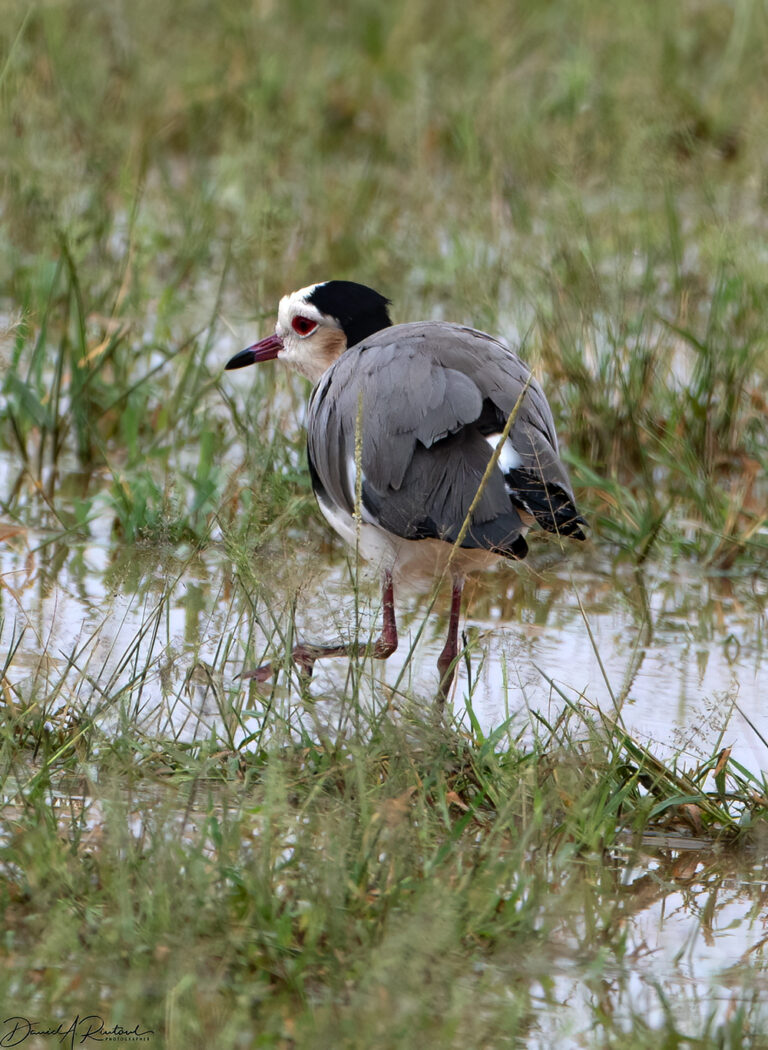
Lapwing #3 is the Long-toed Lapwing (Vanellus crassirostris). Although the field guides all claim that this bird is “widely distributed and common”, I think that this is the only day we saw this species on this trip. Click here for larger image.
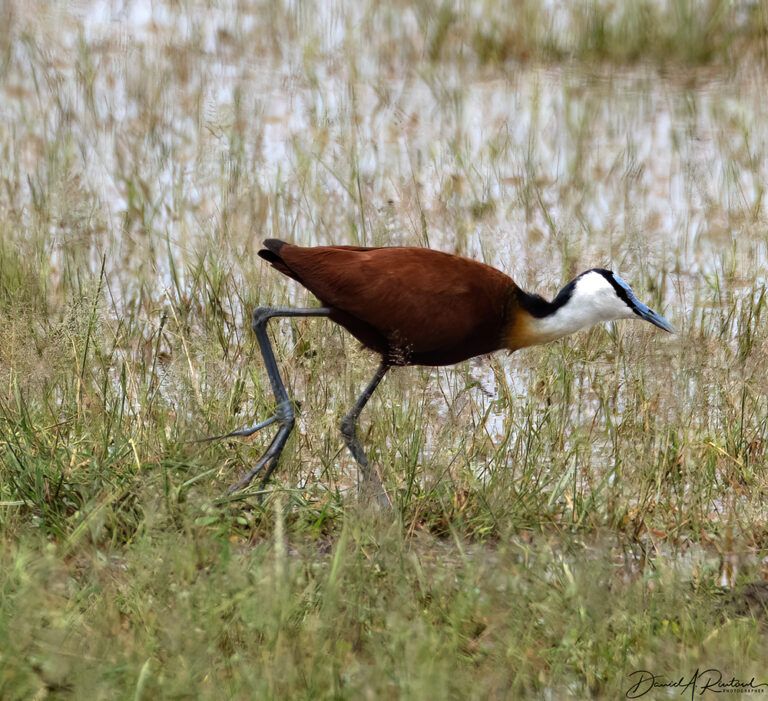
Speaking of long toes, check out this African Jacana (Actophilornis africanus). All eight members of the family Jacanidae have these long toes, and they allow the birds to amble through marshy ground or even atop lily pads with ease; the common names for these birds include “Jesus Bird” and “Lily Trotter”. Pronunciation of Jacana is one of those things that birders like to argue about, but most folks pronounce the c as “s”, like in the word façade. Click here for larger image.
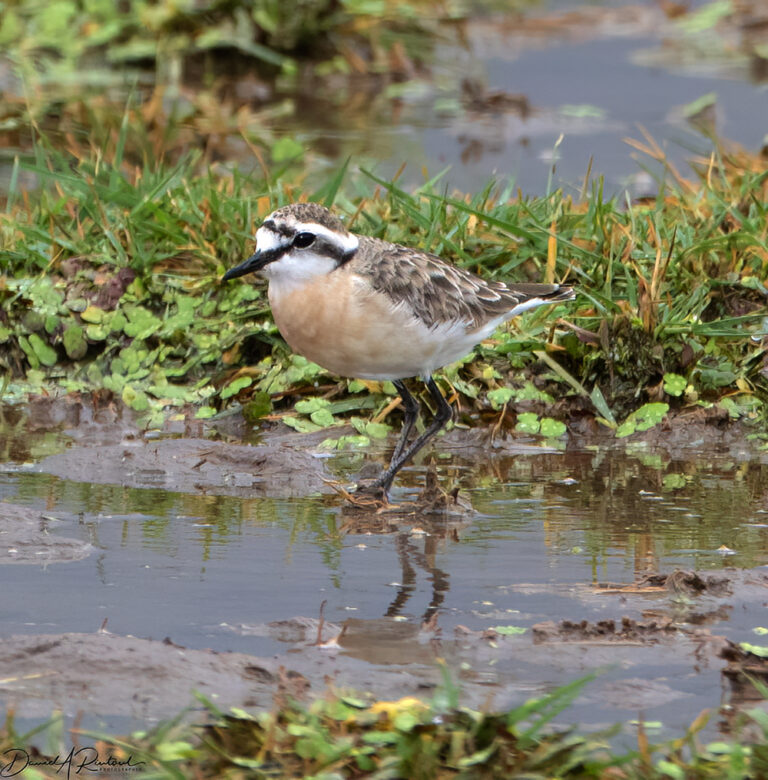
Our final shorebird for today is a cutie, the Kittlitz’s Plover (Charadrius pecuarius). This is a bird I didn’t think we would see as I was preparing for the trip, as it was described in the field guide as only “locally common”. So I was thrilled to see it and get some pictures! Now I just need to get up to Beringia and see Kittlitz’s other species, the Kittlitz’s Murrelet. Click here for larger image.
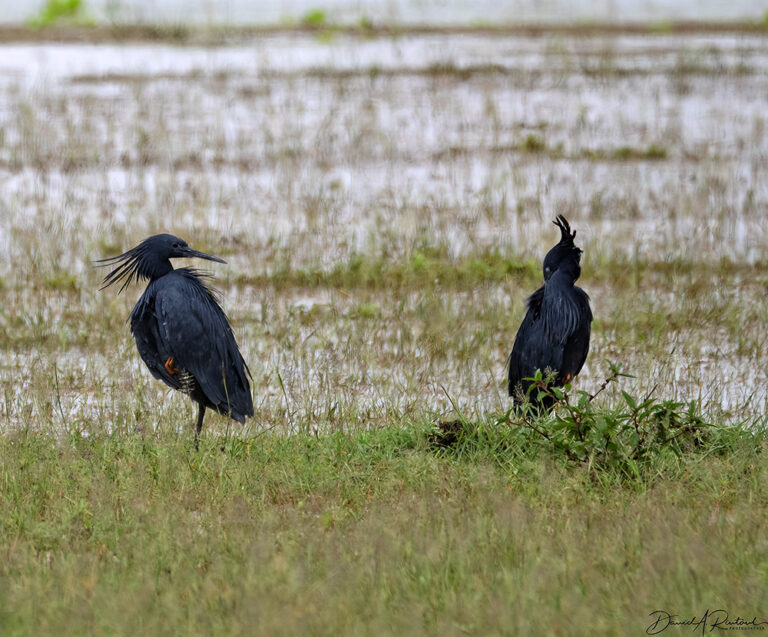
And this is a bird that I really didn’t expect to see. In fact, one of our guides had never seen this species before, and he was thrilled when I pointed it out at a great distance across the marsh. Black Heron (Egretta ardesiaca, aka Black Egret) is non-migratory and “generally scarce”, according to the field guides. I wish we had been able to get closer to them, but as you can see the marshy ground (coupled with a rainy day) rendered that wish a bit imprudent! Click here for larger image.
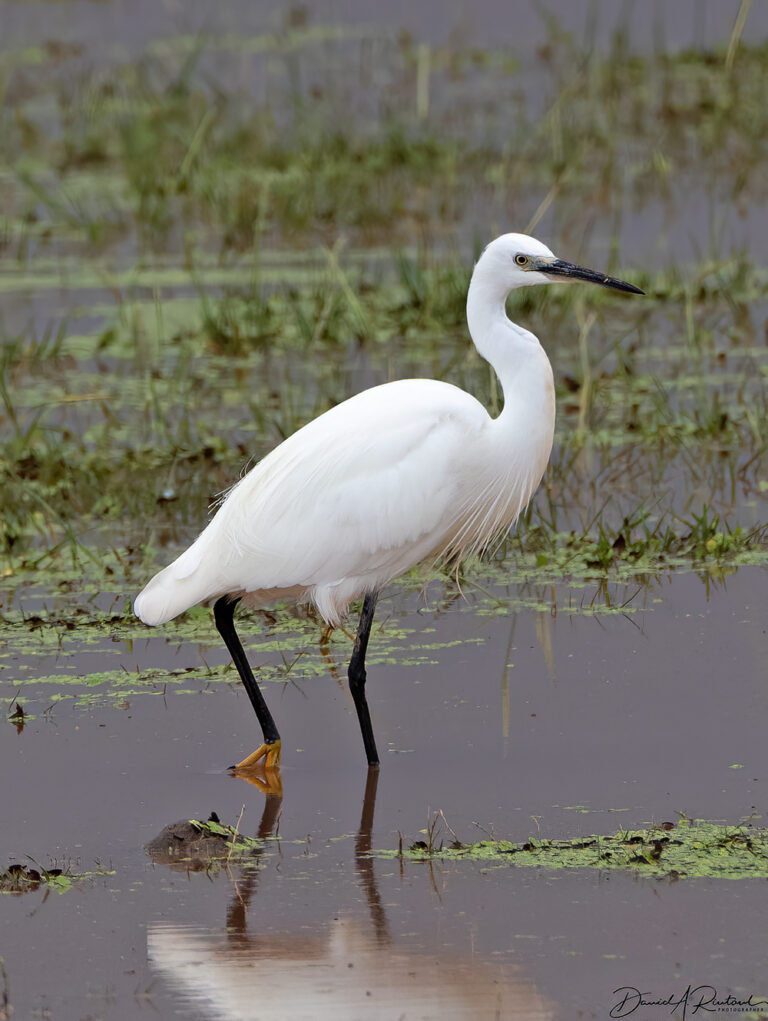
This is a much more common, and much less melanized, heron, the Little Egret (Egretta garzetta). This bird, found in Europe, Asia, Australia, and Africa, is VERY similar to our familiar small white egret in North America, the Snowy Egret (Egretta thula). When Little Egrets stray across the Atlantic, they are probably often overlooked, in fact. They have established breeding populations in Barbados and Antigua, however, so we all may have to learn the subtle features that distinguish between these two species. Click here for larger image.
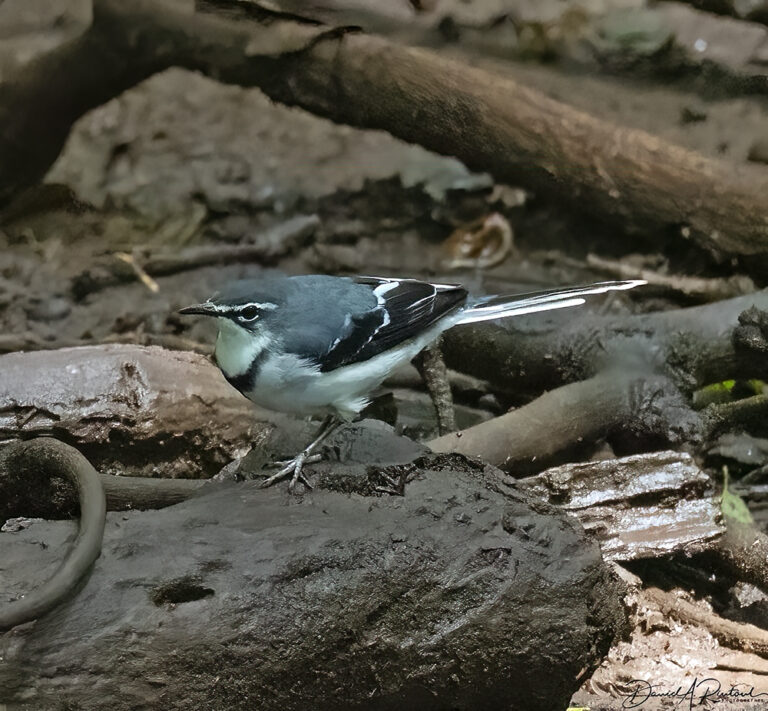
You’ve probably had enough of wetland birds by now, so here is a montane species that I also was not expecting to see, the Mountain Wagtail (Motacilla clara). There are 13 species in the family Motacillidae, all found in the Old World only. This one is only found in Africa, and likes fast-moving streams. Click here for larger image.
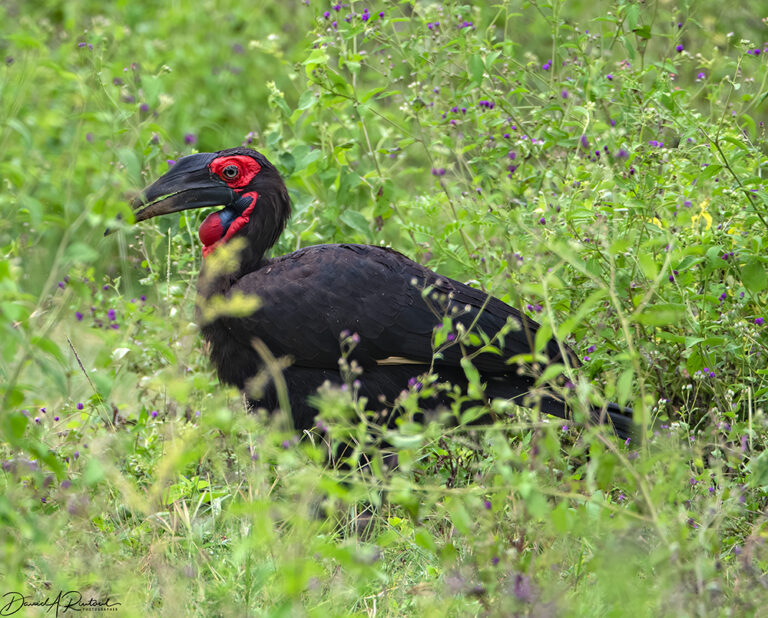
Most hornbills hang out in trees or shrubs most of the time, but this Southern Ground Hornbill (Bucorvus leadbeateri) was true to its name, and was wandering about in this brushy area. That red throat pouch is inflatable, and this is a pretty impressive bird, all in all. Check out the eyelashes on the bird in this video. Click here for larger image.
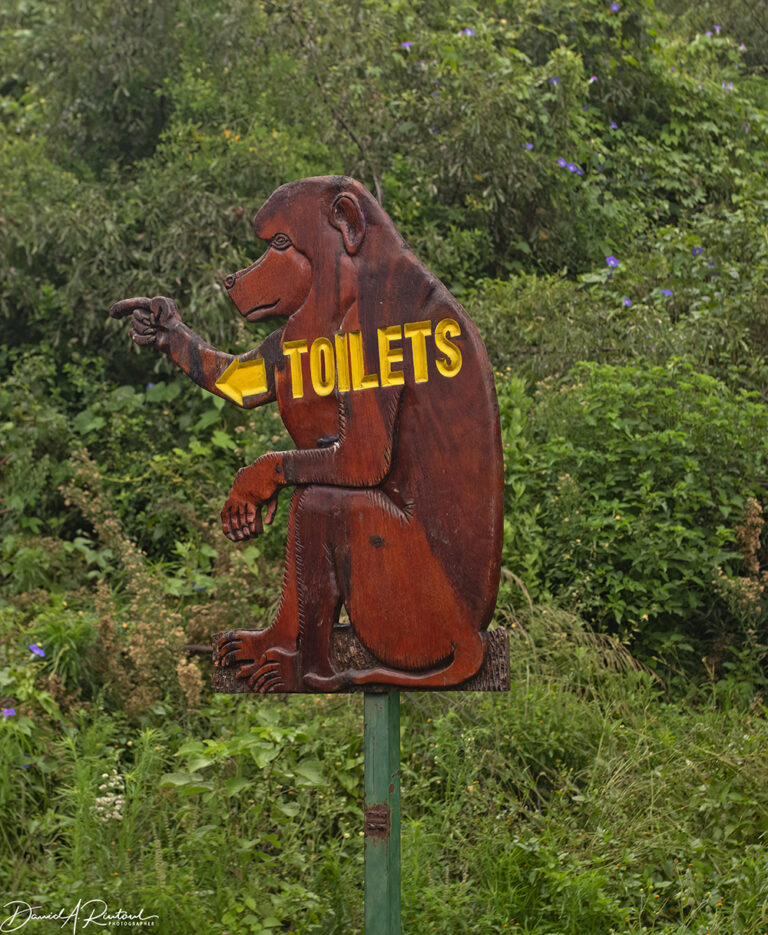
The park also had some creative signage, and indeed lots of baboons. Click here for larger image.

Betty
Great that you were able to capture the toes of both long-toed birds. Another interesting collection.
J R in WV
Typical beautiful work, thanks so much !!
eclare
A deceit of lapwings, love it! Great photos and descriptions.
mvr
Really like the black herons.
And thanks for the education on the lapwing name. It will help me remember the name and even maybe what the birds look like.
Thanks!
stinger
Wonderful, as always!
CCL
Exquisite!
Yutsano
Yay! The birbs are back! I’m honestly happy you got to see the black herons at all. They look magnificent. Well all these guys do but they stand out this week.
Madeleine
Having lived near a pond often visited by un-melaninated herons, seeing the black herons is special. Your good fortune is now ours.
The hornbill is a bird that makes me think dinosaur and, yet, those eyelashes!
Thanks always.
eclare
@Madeleine: Thanks for pointing that out so I would watch the video. Wow! I want eyelashes like a hornbill!
opiejeanne
@Madeleine: And now you’ve made me wonder if some dinosaurs had eyelashes.
opiejeanne
Gorgeous birds. You never disappoint.
StringOnAStick
Gorgeous, and I love all the details you mention about each bird.
S Cerevisiae
Wonderful birds! Those would all be lifers for me, although I did get numbers 617 and 618 on my list last week, Snail Kites and a Whooping Crane at Paynes Prairie State Park in Florida.